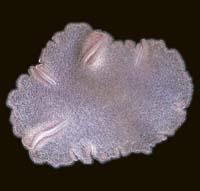Human beings and sponges evolved separately

The plastic can be the common ancestor of human beings and sponges, according to a group of scientists from the University of Medical Veterinary of Hannover. They have come to the conclusion that from this organism human beings and sponges evolved separately. The platelet organism had a few millimeters wide and had the form of a viscous layer. Its closest relative is the plaquozoo Trichoplax adhaerens.
So far it has been believed that the common ancestor of all animals was a type of sponge. For this reason, scientists at the University of Hannover have discovered a great controversy. In fact, the evolution of man and sponge in the phylogenetic tree in two different lines has led researchers to the conclusion that the nervous system arose separately in each evolutionary line.
Several scientists oppose the theory. Some consider that the nervous systems of animals of these two possible lines present great molecular similarities. That is why they say that this separation is incredible. But Hannover researcher Bernd Schierwater says it is not so complicated to have created the nervous system twice. In his opinion, the platelet already had all the genes necessary to lay the bases of the nervous system, but did not need to develop them.





